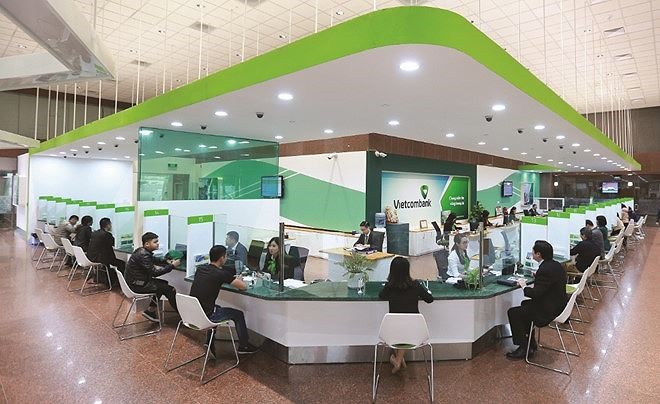 Economy
Economy

More commercial banks expect their credit growth limits to be expanded this year after Techcombank became the first to get the nod to do so from the State Bank of Việt Nam (SBV) recently.
 |
| Vietcombank has almost reached its credit growth quota for 2018. - Photo Vietcombank |
HÀ NỘI – More commercial banks expect their credit growth limits to be expanded this year after Techcombank became the first to get the nod to do so from the State Bank of Việt Nam (SBV) recently.
Nguyễn Lê Quốc Anh, general director of Techcombank, said that the bank had recently been allowed to raise its credit growth limit from 14 per cent to 20 per cent this year. As a result, Techcombank will be permitted to lend an additional VNĐ6-8 trillion (US$256.41-341.88 million) in the last months of 2018.
The move is good news for banks as the last quarter of the year is often the peak lending season while many banks have already hit their credit growth quotas for 2018. At the beginning of the year, the SBV set a credit growth limit for each commercial bank - ranging from 12-16 per cent this year - depending on the bank’s health.
According to analysts, the expansion of the limit was due to credit growth in the entire banking sector reaching just 9.89 per cent as of early October, much lower than the 11.73 per cent rate recorded a year earlier.
The low rate threatened the Government’s full-year credit growth target of 17 per cent, especially when many major banks had almost used up their credit quotas.
Ten major banks such as Vietcombank, HDBank, MB, Vietinbank, BIDV, VIB and VPBank had nearly reached their credit growth limits in the first nine months of the year.
However, it is forecast that only several banks would be allowed to extend their credit limits depending on their financial status and handling of bad debt. In the case of Techcombank, it was among the few banks to have cleared all its debts with the Việt Nam Assets Management Company (VAMC), and had a capital adequacy ratio (CAR) of 14.33 per cent, much higher than the standardised ratio.
The SBV’s decision to expand credit growth limits for some banks in 2018 had also raised concerns about rising inflation.
Nguyễn Tiến Thỏa, chairman of the Vietnam Appraisal Association, said that the loosening of credit growth would certainly affect inflation, however, the level of the impact would depend on the total amount of additional credit and the time of disbursement.
Thỏa said the SBV should be cautious as the country’s consumer price index had nearly reached the 4 per cent target set for 2018 while prices of goods and services had shown no signs of falling.
In Directive No. 04/CT-NHNN issued in August, the SBV instructed credit institutions to strictly control the pace and quality of credit of the whole banking system. The central bank indicated it would not consider adjusting credit growth limits up for commercial banks (except in special cases, such as those involved in restructuring weak credit institutions scheme in 2018).
Relating to the policy on allocating credit quota to each bank, Trần Du Lịch, a member of the National Monetary Policy Advisory Council, said that in the short run, the SBV could not allow commercial banks to freely decide on their own credit growth and should apply administrative intervention to ensure the country’s macroeconomic stability.
However, in the long term, the SBV should abandon this credit policy and control credit based on banks’ CARs to match international practices while still controlling banks’ capital flows, Cấn Văn Lực, chief economist at the Bank for Investment and Development of Việt Nam, suggested. — VNS




